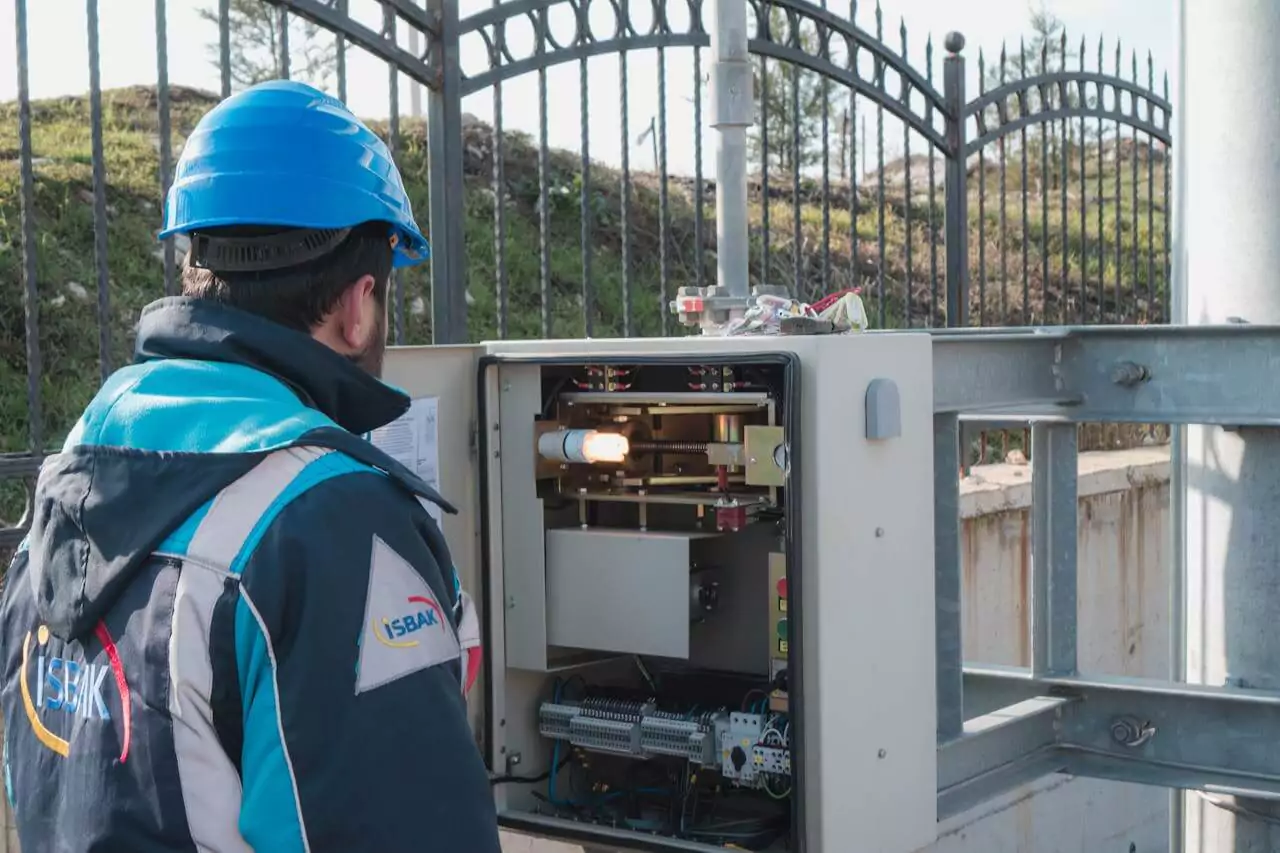A home’s electrical wiring is one of its most essential systems, responsible for delivering power to appliances, lighting, and all the modern conveniences that homeowners rely on daily. While most people don’t think much about the wiring behind their walls, understanding the basics of residential electrical systems can help homeowners maintain safety, prevent common electrical issues, and make informed decisions about upgrades and repairs.
Terrapin Electric specializes in residential electrical services, helping homeowners with wiring installations, repairs, and upgrades. From rewiring older homes to ensuring new construction projects meet the latest electrical codes, our team ensures that every system is safe, efficient, and built to last.
How Residential Electrical Wiring Works
At its core, a home’s electrical wiring system functions like a network, delivering electricity from the main power source to outlets, switches, and appliances. The power enters the home through a service panel, also known as a breaker box, where it is distributed across various circuits. Each circuit is designed to handle a specific electrical load, ensuring that appliances and devices receive the right amount of power without overloading the system.
Electrical wiring consists of several key components, including conductors (wires), protective sheathing, grounding systems, and circuit breakers. The National Electrical Code (NEC) sets strict guidelines for wiring practices to ensure safety and efficiency. These regulations dictate everything from wire size to grounding methods and the number of outlets allowed per circuit.
For homeowners, knowing how power flows through the home can be helpful when troubleshooting minor electrical issues or planning electrical upgrades. However, electrical work should always be performed by a qualified electrician to ensure compliance with safety codes and to prevent hazards.
Common Types of Electrical Wiring in Homes
Different types of electrical wiring are used in residential construction, each suited for specific applications. The most common types include non-metallic sheathed cable (NM cable), armored cable (AC), and conduit wiring.
Non-Metallic Sheathed Cable
Often referred to as Romex, NM cable is the most commonly used type of residential wiring. It consists of multiple insulated wires enclosed in a flexible plastic sheath. NM cable is widely used in interior walls, ceilings, and other dry locations because it is easy to install and cost-effective.
Armored Cable
Armored cable, also known as BX cable, consists of wires encased in a flexible metal sheath for added protection. This type of wiring is commonly used in areas where additional durability is needed, such as older homes, exposed basement ceilings, or where NM cable isn’t permitted.
Conduit Wiring
In some homes, electrical wiring is installed inside conduits, which are protective metal or plastic tubes that shield wires from damage. Conduit wiring is often required in garages, basements, and outdoor areas where wires may be exposed to moisture or physical damage.
Each wiring type has specific applications, and choosing the right one depends on the layout of the home, building codes, and electrical needs. If you’re unsure whether your home’s wiring is up to code or safe for your current power demands, Terrapin Electric can inspect your electrical system and recommend the best solutions for upgrades or repairs.
Understanding Your Electrical Panel
The electrical panel, also known as a breaker box, is the heart of a home’s electrical system. This panel distributes power to different circuits throughout the home and protects against electrical overloads with circuit breakers or fuses.
Each circuit breaker controls a specific part of the home, such as the kitchen, bedrooms, or HVAC system. If a breaker trips, it means that the circuit is drawing too much power, preventing overheating and potential electrical fires. Homeowners should familiarize themselves with their breaker box, including how to reset tripped breakers safely.
When to Upgrade Your Electrical Panel
Older homes often have outdated electrical panels that may not meet modern power demands. If your home still has a fuse box or a panel with limited circuit capacity, an upgrade may be necessary. Signs that your electrical panel needs upgrading include:
- Frequent breaker trips or blown fuses
- Flickering or dimming lights when appliances are used
- Overloaded circuits with multiple power strips or extension cords
- A burning smell or warm panel box
An outdated panel can lead to safety risks and inefficiencies. If you suspect your home’s panel is no longer sufficient for your electrical needs, Terrapin Electric provides professional panel upgrades to ensure safe and reliable power distribution.
The Importance of Proper Grounding
Electrical grounding is a critical safety feature that prevents electric shocks and protects appliances from power surges. In a properly grounded electrical system, excess electricity is directed safely into the earth, reducing the risk of damage during power fluctuations or lightning strikes.
Older homes may have inadequate grounding, increasing the potential for electrical hazards. Signs of grounding issues include frequent static shocks, unexplained power surges, and flickering lights. If you suspect your home’s grounding system is outdated or faulty, Terrapin Electric can assess and upgrade your system to meet current safety standards.
Common Electrical Issues in Homes and When to Call an Electrician
Electrical problems can start as small inconveniences but may quickly escalate into serious safety hazards if left unaddressed. Many homeowners experience flickering lights, warm outlets, or frequently tripping breakers, but these warning signs should never be ignored. Understanding these common electrical issues and knowing when to call an electrician can help prevent costly repairs, fire hazards, and potential power failures.
Overloaded Circuits
Plugging too many devices into a single outlet or circuit can cause overheating and frequent breaker trips. This is especially common in older homes that were not designed to handle today’s high electrical demands.
If you notice your breakers tripping regularly, it could be time to add dedicated circuits for appliances such as refrigerators, microwaves, HVAC systems, or home office equipment. Terrapin Electric can assess your home’s electrical load and install additional circuits to prevent overloading, ensuring that your power distribution remains safe and efficient.
Flickering or Dimming Lights
While occasional flickering may be caused by a loose lightbulb, persistent dimming or flickering when appliances are in use could indicate an overloaded circuit, faulty wiring, or voltage fluctuations. If lights dim when using the microwave, washing machine, or air conditioning unit, your electrical panel may not be distributing power efficiently.
A professional electrician can diagnose and correct these issues, preventing more significant electrical failures. Upgrading to a higher-capacity panel or redistributing circuit loads may be necessary to ensure stable power throughout your home.
Warm or Discolored Outlets
If an outlet feels warm to the touch or shows signs of scorching, charring, or discoloration, it is a clear warning sign of faulty wiring, loose connections, or excessive power draw. Warm outlets may indicate overheating, which can lead to melted wiring insulation and increase the risk of an electrical fire.
It is crucial to stop using the outlet immediately and call a licensed electrician to inspect and repair the issue. Terrapin Electric can replace worn-out outlets, upgrade wiring, and install tamper-resistant or GFCI outlets where needed to enhance safety.
Frequently Tripping Breakers
Circuit breakers are designed to trip when they detect an electrical overload, short circuit, or ground fault, preventing overheating and fire hazards. While an occasional trip is normal, frequent breaker trips signal a deeper issue.
If resetting the breaker does not resolve the problem, the cause may be outdated wiring, a failing electrical panel, or a short circuit somewhere in your system. A professional electrician can identify the root cause, perform necessary repairs, and recommend panel upgrades if needed to accommodate modern electrical loads.
Old or Outdated Wiring
Homes built before the 1980s may still contain outdated wiring, such as knob-and-tube or aluminum wiring. These older systems pose safety risks, including overheating, improper grounding, and increased fire hazards.
If your home has flickering lights, unreliable outlets, or frequent electrical issues, outdated wiring may be to blame. Upgrading to modern copper wiring improves safety, energy efficiency, and compliance with today’s electrical codes. Terrapin Electric specializes in full-home rewiring services, ensuring that your home’s electrical system meets modern safety and performance standards.
Electrical Safety Tips for Homeowners
Maintaining a safe electrical system is essential for protecting your home and family from potential hazards. While major electrical work should always be handled by a professional, homeowners can take simple but effective precautions to prevent electrical issues. By following these guidelines, you can reduce the risk of power failures, shocks, and fire hazards in your home.
Avoid Overloading Outlets and Circuits
Plugging too many devices into a single outlet or circuit can cause overheating, which may lead to electrical fires or breaker trips. Large appliances like refrigerators, microwaves, and space heaters should always have their own dedicated circuits to avoid overloading.
If you frequently use extension cords or power strips, it may be a sign that your home needs additional outlets or an upgraded electrical panel. Terrapin Electric can assess your home’s electrical capacity and recommend solutions to distribute power safely and efficiently.
Use Surge Protectors for Sensitive Electronics
Sudden power surges caused by lightning, faulty wiring, or utility grid fluctuations can damage expensive electronics such as TVs, computers, and home entertainment systems. Using high-quality surge protectors helps safeguard these devices by diverting excess electricity away from your equipment.
For whole-home protection, consider installing a whole-house surge protector, which shields all outlets and appliances from unexpected voltage spikes. Terrapin Electric can install surge protection systems that provide a comprehensive defense against power surges.
Inspect Cords and Outlets for Damage
Damaged power cords, frayed wires, and loose outlets are common electrical hazards that can lead to shocks, short circuits, or even fires. Regularly check your extension cords, appliance plugs, and electrical outlets for signs of wear and tear.
If you notice cracks, scorch marks, or exposed wiring, replace the cord immediately or contact an electrician to repair faulty outlets. Avoid using extension cords as a permanent solution for powering appliances—if you need more access to power, installing additional outlets is a safer option.
Keep Water Away from Electrical Appliances
Electricity and water are a dangerous combination. Keeping electrical devices and outlets dry is critical in preventing electric shocks and short circuits. In areas prone to moisture, such as kitchens, bathrooms, and outdoor spaces, install Ground Fault Circuit Interrupter (GFCI) outlets to automatically shut off power if they detect an electrical fault.
If you have older outlets in these areas that are not GFCI-protected, upgrading them is a simple way to enhance safety. Terrapin Electric provides expert GFCI installation services to help homeowners reduce electrical risks in wet locations.
Schedule Regular Electrical Inspections
Even if your home’s electrical system seems to be working fine, underlying issues may go undetected until they become serious problems. Routine electrical inspections help identify potential hazards, such as outdated wiring, overloaded circuits, or faulty breakers before they lead to power failures or safety risks.
If your home is more than 20 years old, has outdated wiring, or has never been inspected by an electrician, now is the time to schedule a professional assessment. Terrapin Electric offers thorough electrical inspections to ensure your system is safe, efficient, and compliant with modern electrical codes.
By following these safety tips and staying proactive with electrical maintenance, homeowners can reduce the risk of electrical issues and keep their homes running safely. If you have concerns about your home’s electrical system, Terrapin Electric is here to help with expert inspections, repairs, and upgrades to ensure your home remains powered safely and reliably.
Need Help With Your Home’s Electrical System? Contact Terrapin Electric Today
Whether you’re dealing with frequent breaker trips, considering an electrical panel upgrade, or need a complete home rewiring, Terrapin Electric is here to help. Our licensed electricians provide expert residential electrical services, ensuring that your home’s wiring is safe, efficient, and up to code. Don’t wait for electrical issues to become safety hazards—contact Terrapin Electric today to schedule an inspection or consultation. Our team is committed to delivering reliable solutions that keep your home powered safely for years to come.


